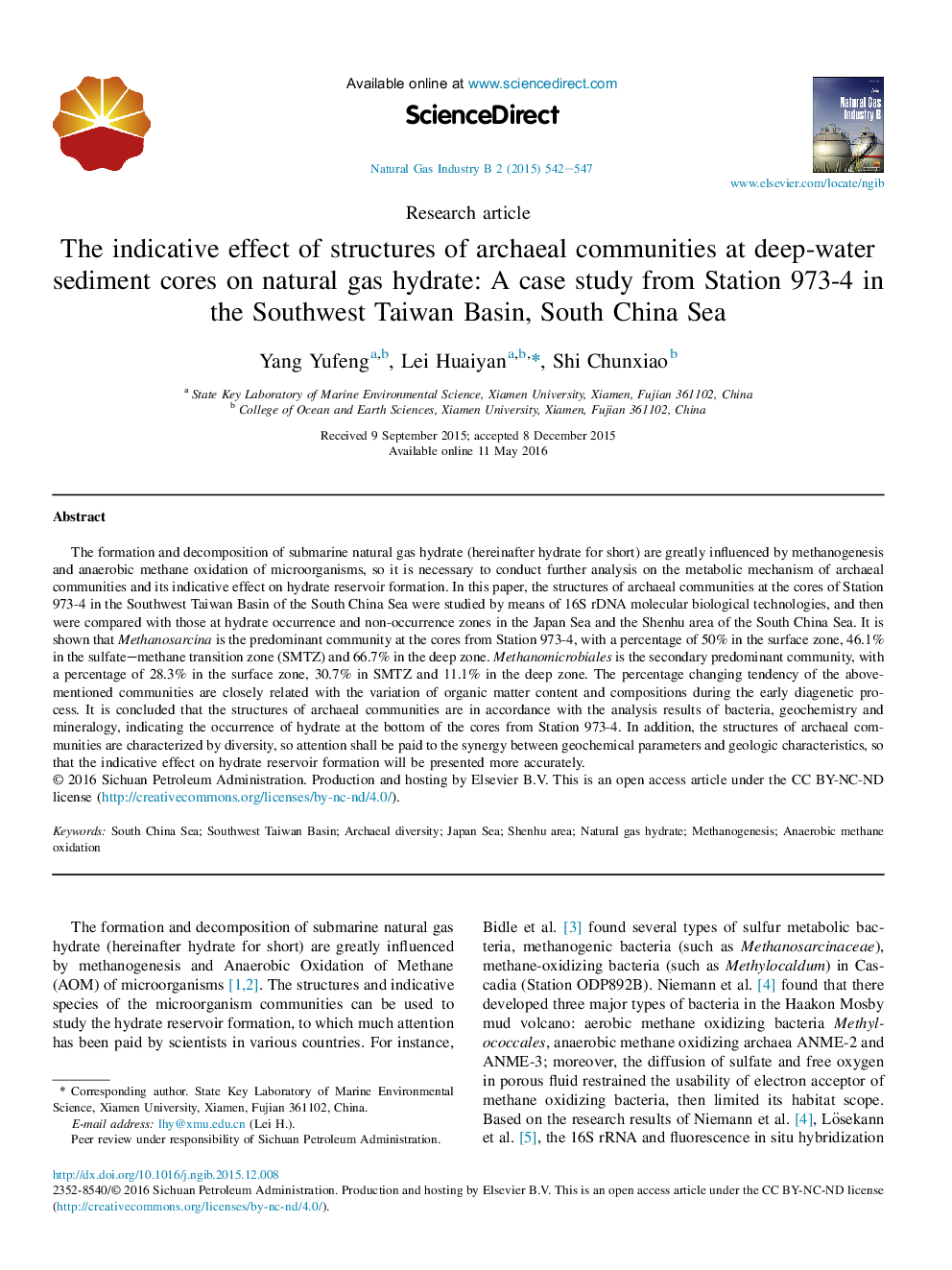| Article ID | Journal | Published Year | Pages | File Type |
|---|---|---|---|---|
| 1747764 | Natural Gas Industry B | 2015 | 6 Pages |
The formation and decomposition of submarine natural gas hydrate (hereinafter hydrate for short) are greatly influenced by methanogenesis and anaerobic methane oxidation of microorganisms, so it is necessary to conduct further analysis on the metabolic mechanism of archaeal communities and its indicative effect on hydrate reservoir formation. In this paper, the structures of archaeal communities at the cores of Station 973-4 in the Southwest Taiwan Basin of the South China Sea were studied by means of 16S rDNA molecular biological technologies, and then were compared with those at hydrate occurrence and non-occurrence zones in the Japan Sea and the Shenhu area of the South China Sea. It is shown that Methanosarcina is the predominant community at the cores from Station 973-4, with a percentage of 50% in the surface zone, 46.1% in the sulfate–methane transition zone (SMTZ) and 66.7% in the deep zone. Methanomicrobiales is the secondary predominant community, with a percentage of 28.3% in the surface zone, 30.7% in SMTZ and 11.1% in the deep zone. The percentage changing tendency of the above-mentioned communities are closely related with the variation of organic matter content and compositions during the early diagenetic process. It is concluded that the structures of archaeal communities are in accordance with the analysis results of bacteria, geochemistry and mineralogy, indicating the occurrence of hydrate at the bottom of the cores from Station 973-4. In addition, the structures of archaeal communities are characterized by diversity, so attention shall be paid to the synergy between geochemical parameters and geologic characteristics, so that the indicative effect on hydrate reservoir formation will be presented more accurately.
